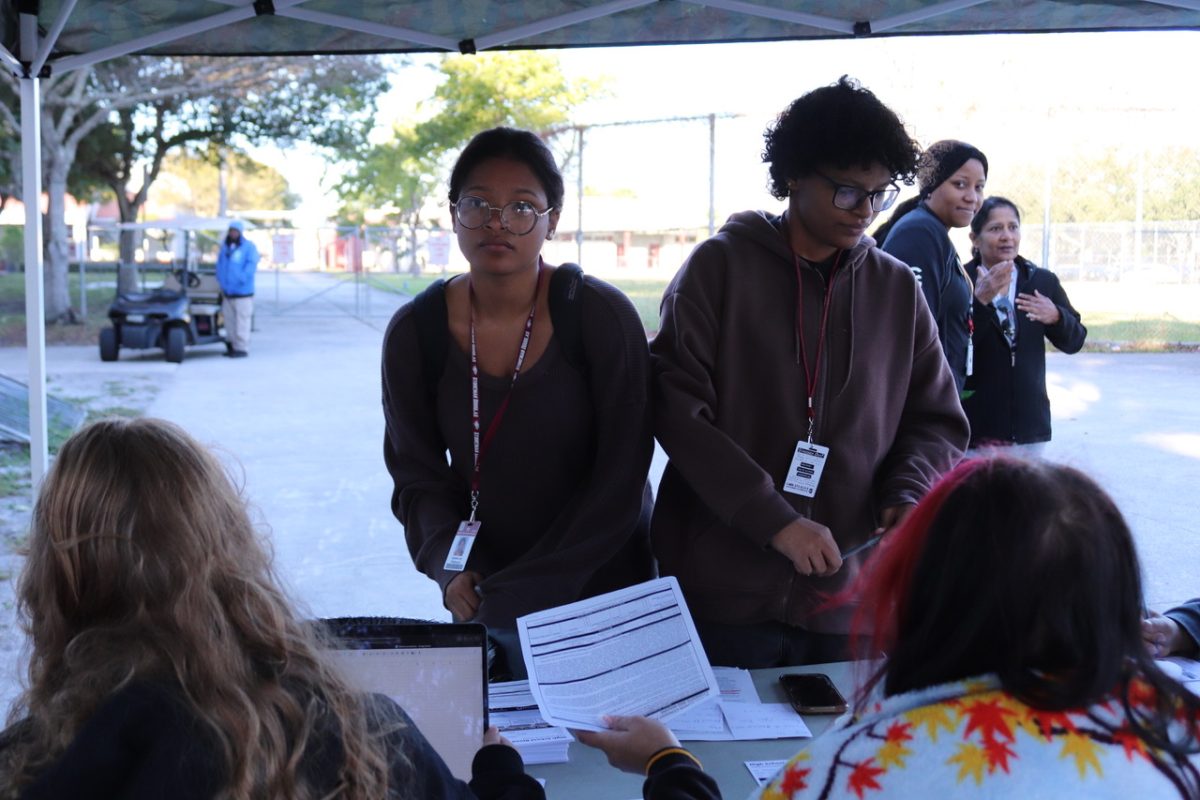
Florida is sinking in the national teacher salary ranking. According to the National Education Association’s annual report on teacher salaries, the Sunshine State has dropped from 45th in 2018 to 46th in the United States in 2019.
The average salary of a teacher in Florida is $47,267, with a starting salary around $37,405. It is one of the lowest in the country, as it lags below the 2017 Nationwide annual salary of $59,660 in 2016-2017 by more than $10,000.
“Obviously when you’re not paid the amount that you feel that you should be paid or you’re not paid as much as teachers in other states, you feel undervalued and under appreciated,” English and teaching academy teacher Felicia Burgin said. “By not giving teachers the pay they should get, the lack of respect is shown.”
A teacher’s salary comes from funds provide through the state government, along with local property taxes.
“With the poor pay, growing healthcare costs, high cost of living, and increase in prices, a teacher’s salary is not sufficient enough to live on, especially if they have multiple children,” U.S. history and sociology teacher Michael Marino said. “I can live off of my salary because I have no children and my wife works as well; for teachers with kids, the pay is a little harder to live on.”
According to the Federal Bureau of Labor Statistics, about one in five teachers have a second job.
“At the beginning of my teaching career, I had to be a bartender to get paid more,” advanced placement government teacher Jeffrey Foster said. “Half the teachers I know work two jobs. The salary is barely enough to pay the bills.”
The Brown Center on Education Policy at the Brookings Institution reported that even with more qualified teachers, teacher pay dropped 5% in the last decade. Additionally, studies from the University of Pittsburgh and University of Tennessee, among others presented, show that a low salary serves as one of the main factors for the shortage of teachers available to teach in classrooms across the nation.
Halfway through the 2018-2019 school year, The Florida Education Association and the statewide teachers union reported that there are 2,217 teaching positions available for teachers in Florida, which is an increase of about 700 from last year.
The shortage forces schools to hire non-certified teachers. The national non-profit, non-partisan Learning Policy Institute predicts that unqualified or under-qualified teachers are teaching hundreds of thousands of students across the nation.
“Some teachers at this school and at other schools don’t teach,” junior Emalie Hull said. “They make you learn the material by yourself through videos and by reading the textbook. That’s not really helpful because students need to be taught the material through their teachers, so they can ask questions and receive answers.”
Teachers not only work during school hours, but they work unpaid hours before and after school.
“The teaching program that I’m in at school helped me see how much teachers have to do,” President of Future Educators of America Hailey Carpenter said. “Many teachers come early to school to prepare for class, stay late to finish grading and some are sponsors for after-school school clubs. Teachers are such a necessity in our society; without them, nobody would be able to do their jobs because teachers are the ones that teach them how to do it.”
For most teachers, their passion of teaching is what keeps them going. The love of building relationships with kids, making an impact for the future, helping children when they need it and having the ability to see students succeed is what makes them continue teaching. Although money is a major factor, the teacher-student bonds created are often what keeps a teacher seated at their desk.
This story was originally published in the April 2019 Eagle Eye print edition.










